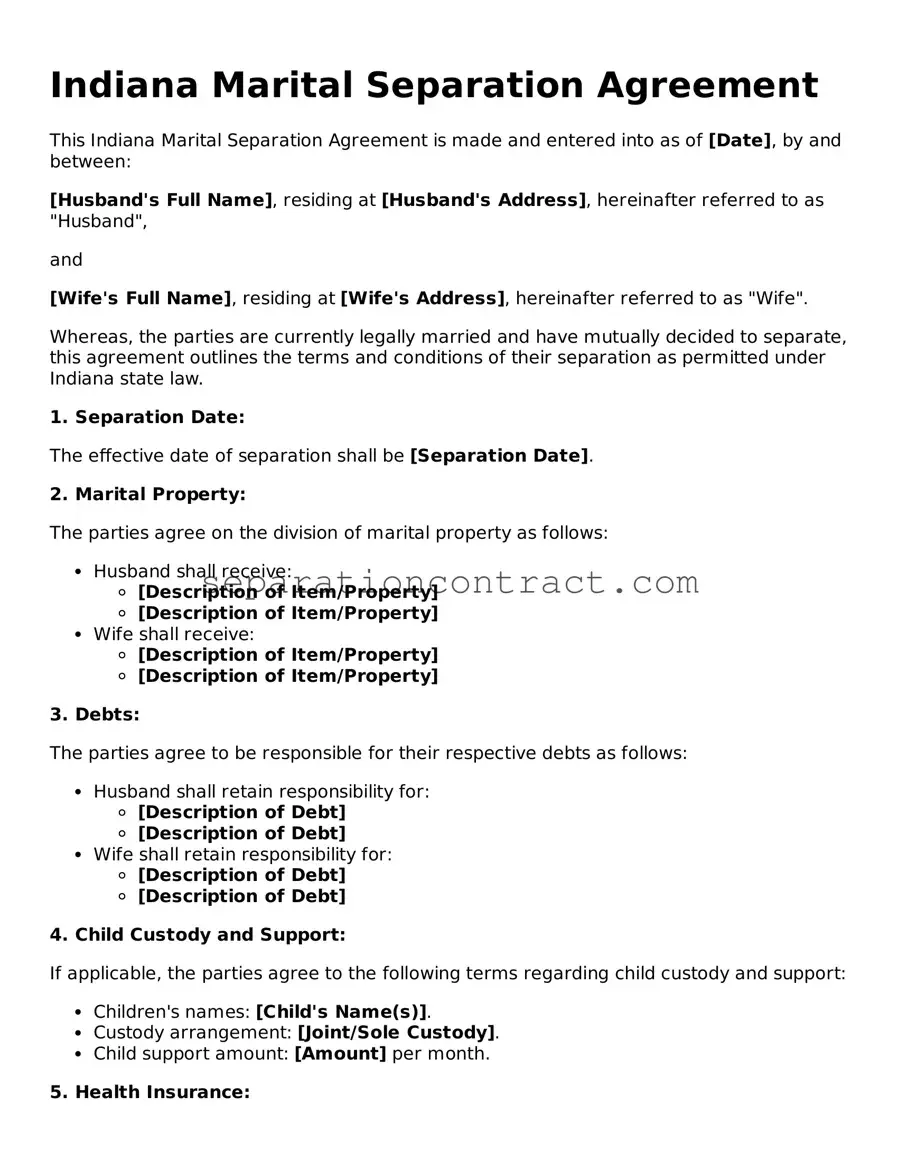Completing the Indiana Marital Separation Agreement form can be a complex process, and many individuals make mistakes that can lead to complications down the road. One common error is failing to provide complete and accurate information. This includes neglecting to list all assets and liabilities. Incomplete disclosures can lead to disputes later, as one party may claim they were unaware of certain financial obligations or properties.
Another frequent mistake is overlooking the need for both parties to sign the agreement. Even if both individuals have agreed to the terms, the absence of signatures can render the document unenforceable. It is crucial to ensure that both parties not only agree to the terms but also formally acknowledge their acceptance by signing the document.
People often misinterpret the terms of the agreement. For instance, they may not fully understand the implications of custody arrangements or support obligations. Misunderstanding these terms can lead to unrealistic expectations and potential conflicts. Seeking clarification on these points can prevent future disputes.
Some individuals fail to consider the tax implications of their agreements. For example, decisions regarding alimony or property division can have significant tax consequences. Ignoring these factors may result in unexpected financial burdens after the separation is finalized. Consulting a financial advisor or tax professional can provide valuable insights.
Another common mistake involves not updating the agreement when circumstances change. Life events such as job loss, relocation, or changes in income can impact the terms of the agreement. It is essential to revisit and amend the agreement as necessary to reflect current realities, ensuring that it remains relevant and enforceable.
Lastly, individuals may underestimate the importance of legal advice. While it is possible to complete the form independently, seeking assistance from a legal professional can help clarify complex issues and ensure that all legal requirements are met. This can be especially important in contentious separations where the stakes are high.
